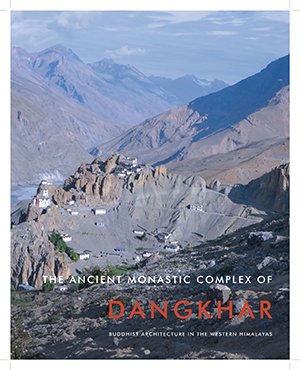The Ancient Monastic Complex of Dangkhar
Buddhist Architecture In The Western Himalayas
Holger Neuwirth/Carmen Auer (eds.)
Graz: Publishing Company of Graz University of Technology, 2013
English, 328 pages, paperback
ISBN 978-3-85125-297-2
EUR 88.00
Dangkhar is located within the Spiti valley in Himachal Pradesh, India, a region inhabited by a Tibetan-speaking population for more than thousand years. The ancient monastic complex, situated in the village of the same name, is nested on a vertiginous cliff at the impressive altitude of 3,850 m overlooking the meanders of the Spiti-Pin river confluence.
The origin of this fortified site is believed to go back to the 10th-11th century when a powerful dynasty of royal patrons and kings initiated a Buddhist renaissance in the Western Himalayas.
It gradually assumed the double function of a political centre and a religious establishment and witnessed the various influences from the neighbouring states (e.g. Ladakh, Tibet) which competed for political supremacy and religious hegemony. Despite the lack of historical sources and archaeological evidence available, the monastery of Dangkhar is intimately linked to the history of the Spiti valley which was an important centre for trade, communication and religious ideas between the Indian subcontinent, Central Asia and West Tibet.
Holger Neuwirth and Carmen Auer teach and conduct research at the Institute of Architectural Theory, Art History and Cultural Studies.

